Top Stories
UC Santa Barbara Alumni Association has named retired NASA astronaut José Hernandez (M.S., Electrical and Computer Engineering, 1986) UCSB’s 2015 Distinguished Alumnus.
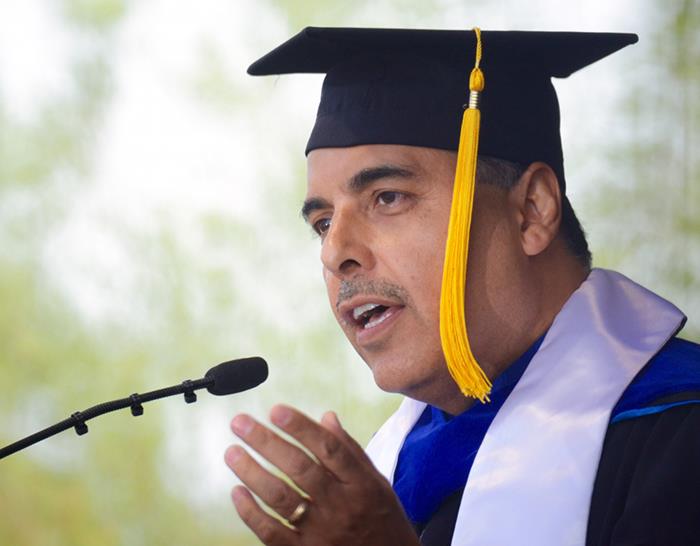 California-born José Hernandez didn't learn to speak English until he was 12 years old. Young José would travel throughout the state for nine months out of the year to farms, where he would work in the fields alongside his siblings and immigrant parents to pick strawberries, cherries, cucumbers, grapes, and tomatoes. In December 1972, a fascinated 10-year-old José sat in front of his family's old black-and-white console TV to watch Apollo 17 Commander Eugene Cernan make the last walk on the moon. It was at that moment that José decided: "I want to be an astronaut." Despite his determination and the excellent graduate engineering education he later received at UC Santa Barbara, NASA rejected him for the astronaut program 11 times. But Hernandez didn't give up, and the 12th time was a charm. In his 40s, he was finally accepted into the program, and he reached his dream to fly in space as an astronaut.
California-born José Hernandez didn't learn to speak English until he was 12 years old. Young José would travel throughout the state for nine months out of the year to farms, where he would work in the fields alongside his siblings and immigrant parents to pick strawberries, cherries, cucumbers, grapes, and tomatoes. In December 1972, a fascinated 10-year-old José sat in front of his family's old black-and-white console TV to watch Apollo 17 Commander Eugene Cernan make the last walk on the moon. It was at that moment that José decided: "I want to be an astronaut." Despite his determination and the excellent graduate engineering education he later received at UC Santa Barbara, NASA rejected him for the astronaut program 11 times. But Hernandez didn't give up, and the 12th time was a charm. In his 40s, he was finally accepted into the program, and he reached his dream to fly in space as an astronaut.
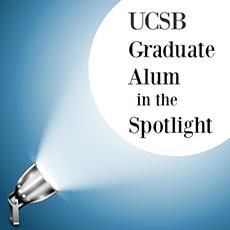 The Stockton boy who overcame many challenges grew into an adult with numerous achievements to his name. Among them: At Lawrence Livermore Lab, Hernandez co-developed the first full-field digital mammography imaging system to aid in early detection of breast cancer. He founded his own engineering consulting firm, Tierra Luna Engineering. He created a nonprofit foundation that aims to ensure opportunities for children to pursue their educational and professional goals regardless of perceived obstacles. A San Jose middle school was named after him. He has received six honorary doctorate degrees. He was UCSB School of Engineering's Commencement speaker in June 2014. And he has written a biography (no ghostwriter, he says; "I wrote every single word") called "Reaching for the Stars," which will be made into a movie next year directed by Alfonso Arau ("Like Water for Chocolate," "A Walk in the Clouds").
The Stockton boy who overcame many challenges grew into an adult with numerous achievements to his name. Among them: At Lawrence Livermore Lab, Hernandez co-developed the first full-field digital mammography imaging system to aid in early detection of breast cancer. He founded his own engineering consulting firm, Tierra Luna Engineering. He created a nonprofit foundation that aims to ensure opportunities for children to pursue their educational and professional goals regardless of perceived obstacles. A San Jose middle school was named after him. He has received six honorary doctorate degrees. He was UCSB School of Engineering's Commencement speaker in June 2014. And he has written a biography (no ghostwriter, he says; "I wrote every single word") called "Reaching for the Stars," which will be made into a movie next year directed by Alfonso Arau ("Like Water for Chocolate," "A Walk in the Clouds").
It is because of these achievements and others that the UC Santa Barbara Alumni Association has named Hernandez (M.S., Electrical and Computer Engineering, 1986) UCSB's 2015 Distinguished Alumnus. Hernandez, 53, will be honored on Saturday, Oct. 24, at an awards luncheon in Corwin Pavilion.
The ceremony also will commemorate UCSB's new designation as a Hispanic-Serving Institution (HSI). An HSI is a college or university in which Hispanic enrollment comprises a minimum of 25 percent of the total enrollment of undergraduate and graduate students. UCSB was named a Hispanic-Serving Institution by the Hispanic Association of Colleges and Universities and is the only HSI that is also a member of the prestigious Association of American Universities.
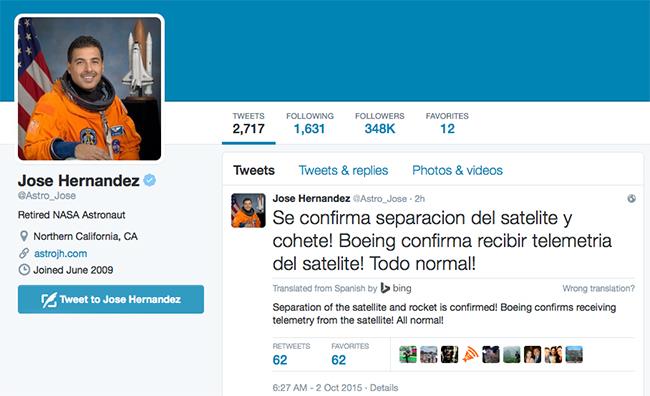 "We are very excited to have José Hernandez return to campus to help us kick off the campaign to raise money for Dreamers' scholarships," George Thurlow, UCSB's assistant vice chancellor for alumni affairs and executive director of UCSB's alumni association, said an Office of Public Affairs and Communications news release. "José's story is an inspirational one for all alumni and for all Californians. His work today with Latino youth is even more inspirational."
"We are very excited to have José Hernandez return to campus to help us kick off the campaign to raise money for Dreamers' scholarships," George Thurlow, UCSB's assistant vice chancellor for alumni affairs and executive director of UCSB's alumni association, said an Office of Public Affairs and Communications news release. "José's story is an inspirational one for all alumni and for all Californians. His work today with Latino youth is even more inspirational."
Hernandez was at Cape Canaveral in Florida this week to assist his Tierra Luna Engineering client, Mexico, in the launch of its Boeing-made communications satellite aboard a Lockheed-made rocket. He took some time away from his duties (which included tweeting about the launch in both Spanish and English from his account, @Astro_Jose) for a phone interview with the GradPost. He spoke about the Distinguished Alumnus honor; the mammography technology he co-developed; his father's winning "recipe"; how UC Santa Barbara prepared him for his career; what he thinks of space movies; which actress he would like to portray his wife in the upcoming film about his life; and more.
***
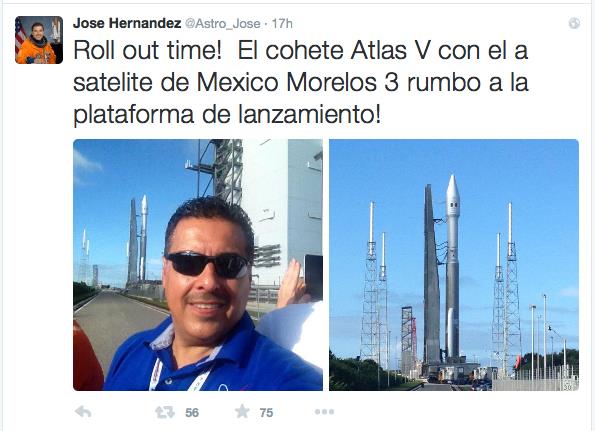 Hernandez called the Distinguished Alumnus award "a great honor." Said the retired NASA astronaut: "I'm very happy, very humbled to be recognized in this fashion."
Hernandez called the Distinguished Alumnus award "a great honor." Said the retired NASA astronaut: "I'm very happy, very humbled to be recognized in this fashion."
The additional celebration of UCSB's new designation as a Hispanic-Serving Institution will make this occasion extra special for Hernandez.
"To be recognized as a Hispanic-Serving Institution, you have to have a student body that's 25 percent or more Hispanic," he said. "And the fact that the school has reached that milestone is a great testament to the commitment that the university makes in its strategy to have a diversified population. The designation is a tangible metric that basically demonstrates the fact that the university is committed to diversity and is a welcoming institution for everybody. And so I'm very happy to be participating in the recognition of that milestone."
Hernandez knows a thing or two about milestones. When he shared his dream of becoming an astronaut with his father, Salvador took José to the kitchen table, sat him down, and presented his five-ingredient recipe for success. That recipe was smart and sophisticated for a man with a third-grade education, and it came to serve José well.
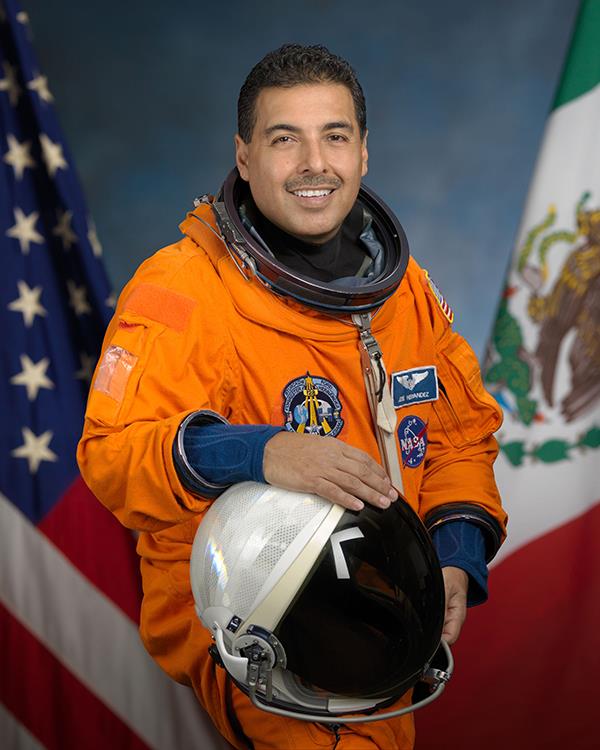 The recipe: 1. Decide what you want to be in life. 2. Recognize how far you are from that goal. 3. Draw up a detailed roadmap of where you are and where you want to be. 4. Prepare yourself with the appropriate education, because "there's no substitute for an education." And 5. Develop a strong work ethic - the same strong work ethic that went into harvesting crops. "Always deliver more than what people ask of you," Salvador told his son.
The recipe: 1. Decide what you want to be in life. 2. Recognize how far you are from that goal. 3. Draw up a detailed roadmap of where you are and where you want to be. 4. Prepare yourself with the appropriate education, because "there's no substitute for an education." And 5. Develop a strong work ethic - the same strong work ethic that went into harvesting crops. "Always deliver more than what people ask of you," Salvador told his son.
Hernandez has followed that recipe throughout his life. He realized that to become an astronaut would require an advanced engineering degree. So upon earning his bachelor's degree at the University of the Pacific in Stockton, he chose to pursue his graduate studies at UC Santa Barbara after discovering that UCSB was among the Top 5 schools for electrical engineering.
His education at UCSB prepared him for his job afterward at Lawrence Livermore Lab.
"My undergraduate program at the University of the Pacific prepared me to be a good engineer in the sense of giving me the basic tools," he said. But it was at UC Santa Barbara, he said, that he learned and honed skills in research.
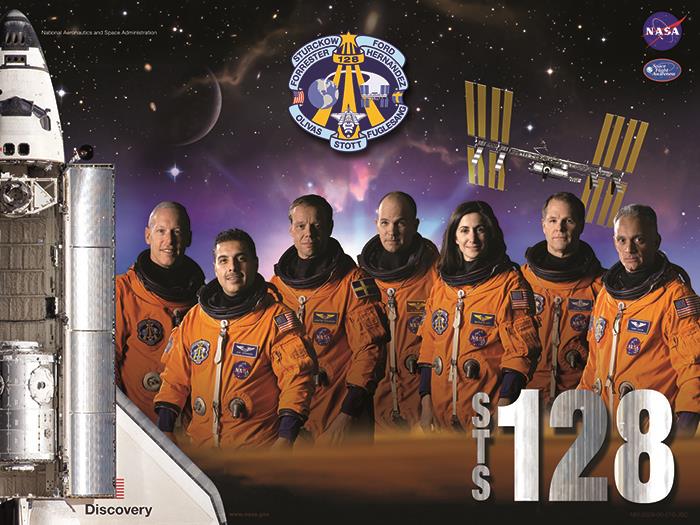 "I got a great opportunity to do research at the graduate level at UCSB and that allowed me to become an even better engineer when I went to work for Lawrence Livermore Lab," he said.
"I got a great opportunity to do research at the graduate level at UCSB and that allowed me to become an even better engineer when I went to work for Lawrence Livermore Lab," he said.
Hernandez said his acquired research skills "allowed me to flourish as an engineer." He also attributed those skills "to being able to latch onto a project." He did just that as one of the two investigators to develop what was then the first full-field digital mammography system for the early detection of breast cancer.
He said when he's asked what is the proudest moment of his professional career, "a lot of people expect me to say being an astronaut and going into space." But in reality, Hernandez said, it's the mammography technology he co-developed. The system, he said, produced images far superior to the film screen technology that was being used then and opened up a new area of study called computer-aided diagnosis.
 "So I have no doubt that the technology that we co-developed at Lawrence Livermore Lab has saved hundreds if not thousands of lives," he added. "And I attribute a lot of that - the skills to be able to develop that - to the research skills that I acquired as a graduate student at UC Santa Barbara."
"So I have no doubt that the technology that we co-developed at Lawrence Livermore Lab has saved hundreds if not thousands of lives," he added. "And I attribute a lot of that - the skills to be able to develop that - to the research skills that I acquired as a graduate student at UC Santa Barbara."
Along with learning research skills at UCSB, Hernandez acquired writing skills. He wrote research reports and took technical writing courses. That skill has been put to use at Lawrence Livermore Lab, at NASA, and in his work as the author of his biography, "Reaching for the Stars." He is proud to say that he had no ghostwriter and that he "wrote every single word."
"They say engineers can't write. But I was able to write that book," he added.